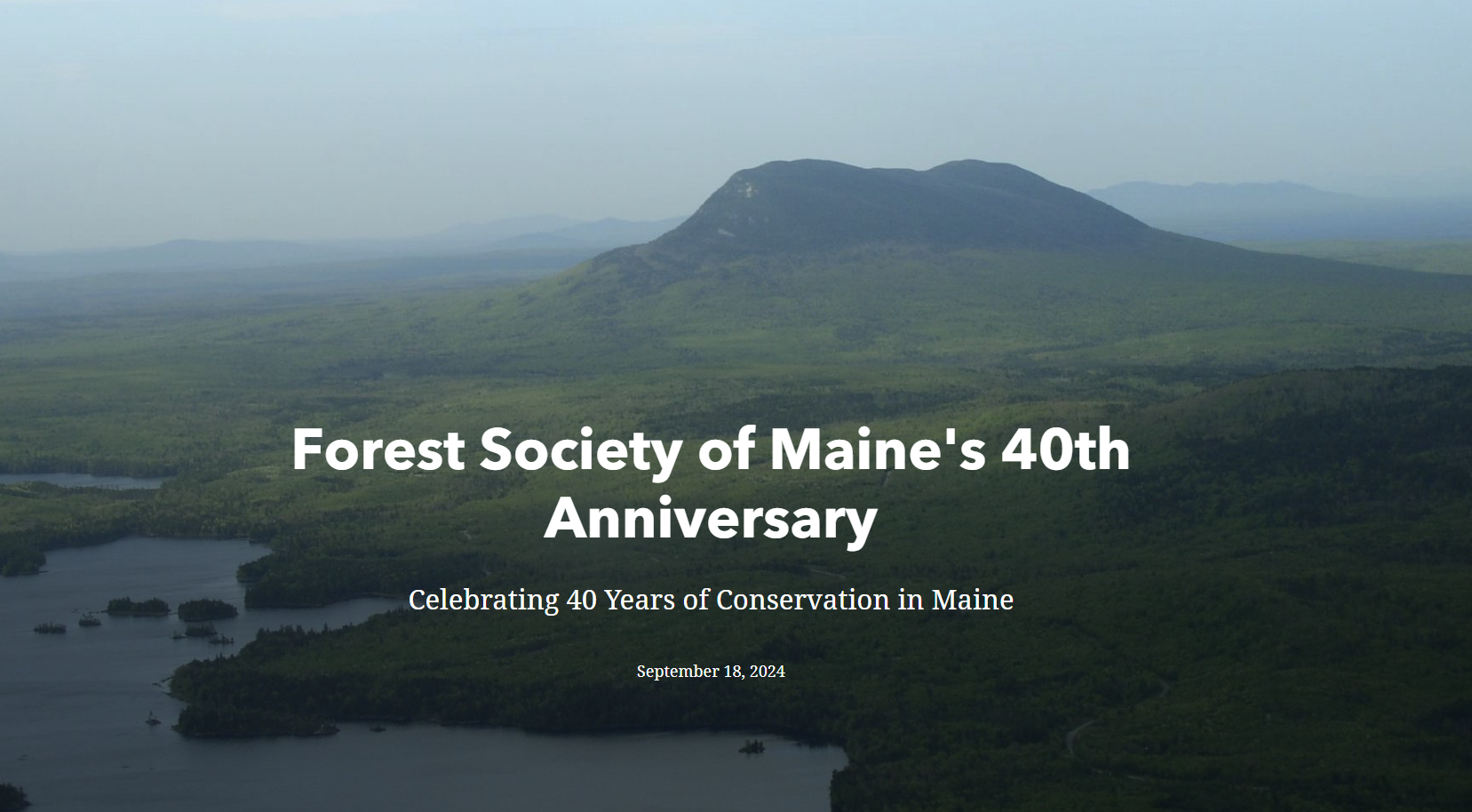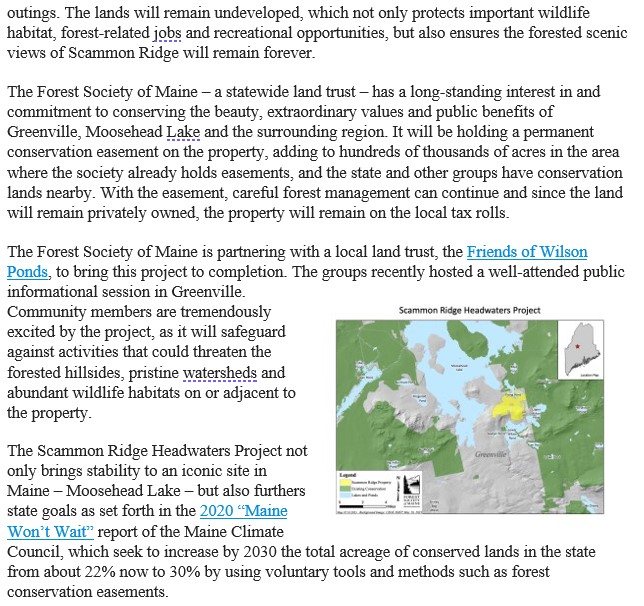
40th Anniversary StoryMap Live!
Maine’s North Woods is a bird sanctuary. Let’s keep it that way.
A new study makes it clear that our state’s undeveloped, unfragmented forests should not be lost.
By Karin R. Tilberg, Forest Society of Maine President/CEO. Published in the Portland Press Herald.
This time of year, I wake up and almost immediately begin identifying bird songs. When traveling, I listen to bird song tapes. I keep binoculars nearby.
Spring and songbirds go together and bring enjoyment and awe to many across Maine. What may not be well known is that a large portion of Maine’s North Woods has been deemed an “Important Bird Area” of global significance (Northern Forest Block) for migratory songbirds by National Audubon. The vast undeveloped interior forests are critical as habitat for birds.
Dr. John Hagan led a team of researchers in a recent replica of an extensive study of birds and forestry conducted 30 years ago, published last month. The research was prompted by the deeply troubling fact that North American breeding bird populations have declined by an estimated three billion individuals, or almost 30%, since 1970.
Habitat loss and degradation are considered the primary drivers of declines.
Maine’s commercial forest landscape is the largest contiguous tract of intact (non-developed) forest east of the Mississippi and forms the heart of the largest globally significant Important Bird Area in the lower 48 states. Species such as the Red-eyed Vireo, White-throated Sparrow, Golden -crowned Kinglet, Black-throated Green Warbler, and many others depend on this area for part of their lives. Hagan and his team asked, “What role does this ten-million-acre area play in regional and national scale bird conservation today?”
They wondered how changing ownership and harvesting patterns over the past 30 years may have affected bird populations – positively or negatively? Given the alarming backdrop of national declines in many forest birds, the researchers were surprised to find that 33 (70%) of the 47 species studied showed increases in abundance in the last 30 years. There was also an increase in the number of birds in each research plot from the 1990’s to 2020’s – a 37% increase.
This increase in bird density is the main story to emerge from replication of the 1990s study.
In fact, Dr. Hagan summarizes that the North Woods are serving as a “bird sanctuary” for the nation, supporting National Audubon’s IBA designation.
More research is needed to understand all the forces at work, and some species showed declines in population, but an essential underlying message of the work is that Maine’s undeveloped, unfragmented forests should not be lost.
The Forest Society of Maine, along with many other organizations, is working with willing forest landowners to ensure just that. FSM negotiates and then holds conservation easements in perpetuity that prevent development and fragmentation of large tracts of forest – now one million acres and counting.
In fact, 91% of FSM’s easement acreage lies within the National Audubon Important Bird Area, and state and other NGO conservation lands add to the conservation effort in this IBA.
There are so many benefits that flow from Maine’s uniquely intact forested landscape – work opportunities, locally sourced wood products, carbon sequestration and storage, outdoor recreation, clean water, and fish and wildlife habitats. Let’s celebrate the good news that Maine’s forests are providing habitat for millions of songbirds as they herald spring and renewed life. This new study is proof that our land conservation efforts are working.
Give thanks for the forest and the ocean
Scammon Ridge: Conservation can help nature weather forces of change in Maine
- 1
- 2
- 3
- …
- 15
- Next Page »










